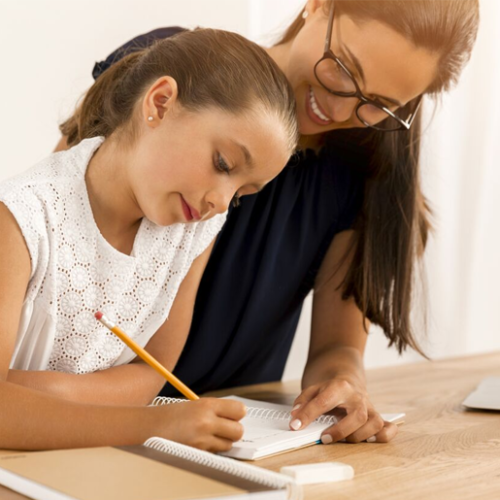What to do when your child says “I’m bored!

Those two little words can drive even the most patient parent up the wall – but boredom isn’t always a bad thing.
It usually arrives just as you’ve sat down with a cup of tea or finally ticked off something from your to-do list – “I’m bored.” The phrase can feel like a challenge, a complaint and a demand all rolled into one and most of us are left scrambling to entertain, distract or solve the problem right there and then. However, what if boredom isn’t something to fix?
The truth is, boredom can be incredibly useful for children. It pushes them to use their imagination, explore their interests and learn how to enjoy their own company. In a world full of screens, schedules and constant stimulation, having nothing to do for a moment can be just what they need. So, instead of rushing to fill every gap, here’s how to respond when your child declares they’re bored – and how to help them learn from it.
Don’t panic
It’s easy to feel like you’ve failed when your child complains of boredom, especially if you’ve worked hard to create a fun, stimulating home. Being bored doesn’t mean they’re neglected or that you’re doing anything wrong. In fact, it can be a healthy part of childhood.
Rather than springing into action, take a breath and reframe the moment. Think of boredom as an opportunity for creativity, curiosity and even a bit of problem-solving.
Don’t fix it
Instead of jumping in with solutions, try acknowledging how your child feels. Saying, “Ah, you’re feeling a bit bored?” or “That can be frustrating sometimes” shows your empathy without taking responsibility for fixing it.
It’s tempting to fill the silence with suggestions, but giving your child space to sit with their boredom encourages them to find their own way out of it. You’re gently handing the baton back, with confidence that they’re more than capable of entertaining themselves.
A gentle nudge
If your child truly seems stuck or overwhelmed by the freedom, a light prompt can help get them going. Open-ended questions are brilliant for this! You could try:
- “What do you feel like creating?”
- “Is there something you’ve not played with in a while?”
- “Can you think of a challenge to set yourself?
Another great option is to keep a simple ‘boredom jar’ at home – a collection of activities, prompts and ideas written on little slips of paper. When your child claims there’s nothing to do, they can dip in and choose one at random. Things like building a blanket fort, drawing a comic, trying a new Lego design, making up a dance or inventing a new game are all good starting points.
Encourage imagination
Unstructured play is where the magic happens. When children have the time and space to play freely, without instructions, rules or outcomes, their creativity flourishes.
If your little one struggles with open-ended play, it can help to create little invitations. These might be as simple as setting out a box of random objects (think pegs, string, cardboard, fabric scraps) or suggesting a loose theme like, “Can you make a secret spy kit?” or “What would a space hotel look like?”Sometimes all it takes is the right spark to turn a boring afternoon into an adventure.
Limit screens
It’s no surprise that when kids are bored, their first request is usually a screen. While there’s nothing wrong with a bit of digital downtime, over-relying on screens can make it harder for children to tap into their own creativity.
Setting healthy limits around screen time (and sticking to them!) helps little ones learn to tolerate boredom without instantly reaching for a device. You can support this by making sure they have easy access to books, craft supplies, puzzles and toys that invite exploration.
Revist old favourites
Sometimes boredom is less about a lack of things to do and more about feeling uninspired by what’s already there. If your son or daughter has shelves of toys but insists there’s “nothing to do,” it might be time to rotate.
Try putting away a few things and reintroducing them a couple of weeks later, as the novelty will often reignite their interest. Similarly, you can reframe old activities by adding a twist – instead of just painting, suggest painting on cardboard or turning it into a treasure map. Think of it like rearranging the furniture – a fresh perspective can breathe new life into familiar things.
“Good boredom”
Not all boredom needs to be solved with an activity. Some of the best ideas kids arrive at come after a bit of moaning, staring out of windows or wandering aimlessly around the house. That quiet lull can give their minds the space to wander and ignite new thoughts.
Rather than viewing boredom as a problem, it’s worth seeing it as a pause – a moment of stillness before something wonderful begins. Letting your child sit in that quiet for a bit (even if it makes them grumble) can lead to deeper creativity and emotional resilience.
Independence is good
Helping children learn how to manage their own boredom is a valuable life skill. When they realise they can shift their own mindset, come up with ideas and follow their curiosity, their confidence grows.
It’s wise to praise their initiative by saying things like, “You figured out what to do all by yourself – that’s brilliant!” or “I loved seeing the game you invented, tell me more about it.” These little boosts remind them that they have everything they need to handle a dull moment.
Make peace with boredom
Boredom can feel uncomfortable – for us and for our children – but it’s a perfectly normal and even necessary part of life. It encourages creativity, builds resilience and teaches kids how to listen to their inner world.
So the next time you hear “I’m bored,” try not to see it as a call to arms. Take a breath, offer a calm response and remember – you’re not just managing a bored child, you’re raising a resourceful one. With a little space and patience, their next big idea might be just a moment of boredom away.
Image Credit: ShutterStock











Comments